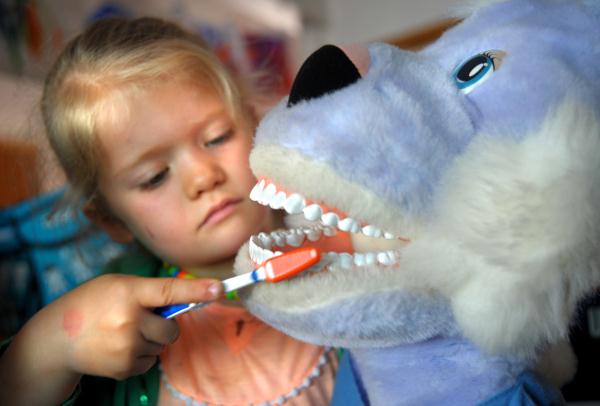
A dental health agency has described local kids’ teeth as “worse than the state average” as they prepare for their annual indulgence in Easter chocolates.
Dental Health Services Victoria (DHSV) said 54.4 per cent of children in the Barwon region who presented at dentists’ clinics had previously suffered tooth decay, with many hospitalised.
The state average was 50.4 per cent, DHSV said.
The agency raked the Barwon region’s children as having the third highest rate of tooth decay in Victoria.
“These figures are especially distressing as the latest data for 2015/2016 shows 5900 Victorian children aged zero to 14 (were) hospitalised due to preventable dental conditions,” DHSV said.
“Most of these hospitalisations are for children having general anaesthetic for management of tooth decay, which could have been avoided with good oral health practices.”
DHSV highlighted the statistics on Tuesday, which was World Oral Health Day.
The date was particularly timely this year, DHSV noted.
“With Easter fast approaching, it’s time to rethink those sugary treats,” the agency advised.
Expecting children to forego chocolate at Easter was “unrealistic” but parents should still help them take care of their teeth, said DHSV chief oral health advisor Martin Hall.
“It is important that we don’t forget about our oral health. Tooth decay can occur when you consume food and drinks containing sugar and starches,” Mr Hall said.
“Bacteria in the plaque on your teeth mix with the sugar and are converted into acids that attack the surface of the teeth. This can lead to tooth decay or holes in the teeth.
“This is a big price to pay for not taking the time out to brush your teeth.”
DHSV’s tips to help children enjoy Easter while minimising tooth decay risks were:
· eating any chocolate at mealtimes rather than between meals;
· brushing twice daily with a fluoridated toothpaste without rinsing afterward “for maximum effect; and
· providing healthy alternatives while limiting sweet foods.
The local decay rates follow the fluoridation of Geelong’s drinking water in June 2009.
Authorities said the addition of fluoride would help with dental health, although ongoing tooth decay rates have been blamed on the cost of dentist appointments and the “late” introduction of fluoridation to the region.






